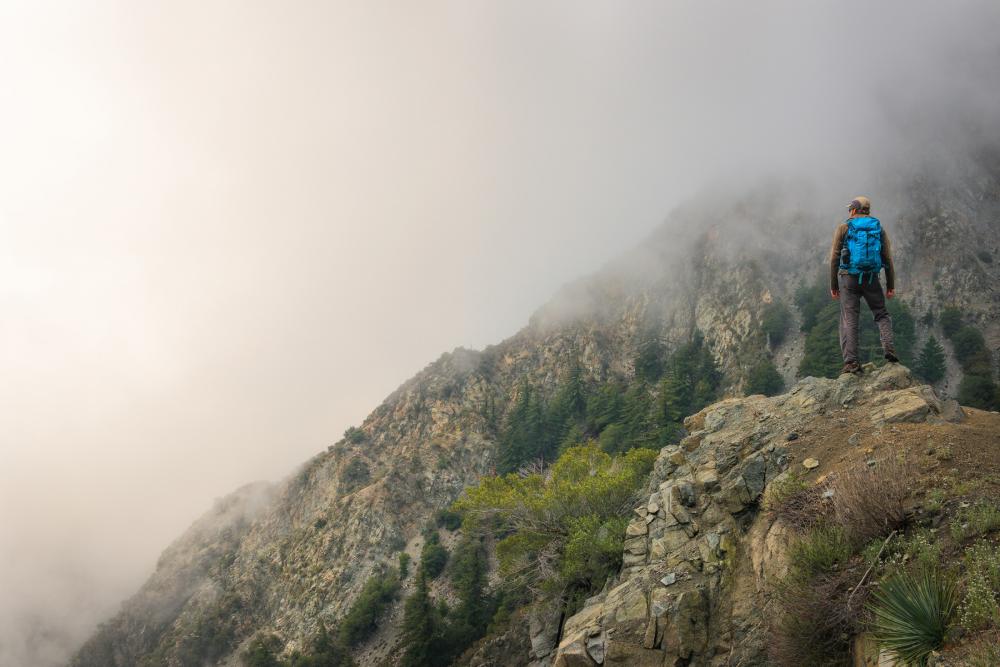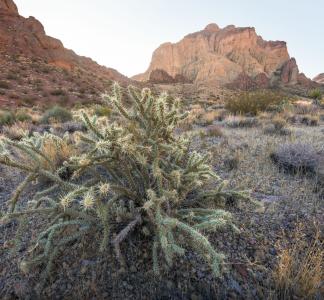What could be next on Biden’s conservation marathon?

A vibrant orange and yellow stone canyon, with shrubs growing from the sandy ground.
Andrew Sambuceto
President Biden looks to break records with new protected areas
In August, President Biden reinforced his public commitment to protecting more public lands by designating Baaj Nwaavjo I'tah Kukveni-Ancestral Footprints of the Grand Canyon National Monument in Arizona. After a slow start for conservation action, the President has been on a roll expanding and designating new protected areas across the United States. Within the past year alone, Biden has designated five new national monuments: Baaj Nwaavjo I’tah Kukveni, Emmett Till and Mamie Till-Mobley, Castner Range, Avi Kwa Ame, and Camp Hale-Continental Divide.
But Biden still has more work to do if he intends to fulfill his promise of leading an administration that sets a new standard for climate and conservation action. As “Dark Brandon” explores U.S. landscapes that deserve further protection, here are a few that we think deserve his attention:
Wild, wild county: Oregon’s Owyhee Canyonlands
Popular imagination usually depicts Oregon as a stereotypical “Pacific Northwest” landscape, full of misty pine forests and towering mountain ranges. While that’s certainly true for some areas, much of the central and eastern area of the state is occupied by an expansive arid region called the High Desert.
Tucked in the far southeastern corner of this desert is an exceptional landscape sometimes called “Oregon’s Grand Canyon”: the Owyhee Canyonlands. It features a unique volcanic geology of rainbow-colored hoodoos and spires, cut through by river gorges dating back 17 million years. These canyons and rolling sagebrush plains are home to more than 200 species of wildlife—including the seriously threatened greater sage-grouse.
These lands hold great cultural significance for the Northern Paiute, Bannock and Shoshone tribes, which have inhabited the area since time immemorial. They are also beloved for their incredible recreational opportunities, including incomparable stargazing in some of the most remote stretches of the continental United States.
Much of the area is public land managed by the Bureau of Land Management (BLM), but development—including fossil fuel and mining interests—is clawing at the edges. Designating a national monument within the Owyhee Canyonlands would ensure this one-of-a-kind landscape remains intact and vibrant for generations to come.
Show your support for the proposed Owyhee Canyonlands National Monument!

The wild beauty of Chuckwalla Bench, part of the California Desert National Conservation Lands
Sam Roberts
East of Coachella: California’s Colorado Desert
In the collective American pop culture psyche, the deserts of Southern California evoke a wide array of musical references. For some—like myself—the mere mention of “California desert” conjures the heavy guitar riffs of Palm Desert rock icons Queens of the Stone Age. Others will immediately think of Indio’s Coachella Valley Music Festival.
To the east of the developed cultural hub, however, lie countless acres of wild and undeveloped public lands. These shrub and tree dotted desert landscapes—home to iconic species like chuckwalla lizards and desert bighorn sheep—have been flagged as a critical target for conservation efforts due to drought and habitat loss. But currently the area only contains disjointed pockets of protected lands like Joshua Tree National Park.
A new community-led proposal seeks to change that by protecting lands adjacent to Joshua Tree National Park and designating Chuckwalla National Monument. Spanning roughly 660,000 acres, the proposed monument would bolster equitable public lands access for communities in the Eastern Coachella Valley, Blythe and beyond. It would also protect the ancestral homelands of the Iviatim, Nüwü, Pipa Aha Macav, Kwatsáan and Maara’yam peoples who still rely on and steward the landscape.
The effort recently received a boost from Representative Raul Ruiz (CA-25), who called on President Biden to honor the community-led effort’s requests with the Antiquities Act.

San Gabriel Mountains National Monument, California
Mason Cummings, TWS
A greener Los Angeles: the San Gabriel Mountains
Update: San Gabriel Mountains was officially expanded in May 2024!
To the west of California’s deserts—and nestled against the Greater Los Angeles area—sit the San Gabriel Mountains, a landscape of shrubland as well as mixed oak and conifer forest. These mountains account for 70 percent of open space in Los Angeles County, offering outdoor recreation opportunities for millions of people and providing critical habitat in the otherwise densely developed, heavily polluted region.
President Obama took a major step in protecting this treasured region by designating the San Gabriel Mountains National Monument in 2014, but the monument’s 347,000 acres still leave room for improvement in the park-deprived city.
Senator Alex Padilla (CA) and Representative Judy Chu (CA-28), alongside local residents, are now calling on President Biden to expand the monument by incorporating that 109,000-acre section of the Angeles National Forest. Doing so would improve access to nature for the predominantly low-income communities of color in the San Fernando Valley and safeguard a critical drinking water source during the ongoing megadrought.

Berryessa-Snow Mountain National Monument, CA
Bob Wick, BLM
A biodiversity hotspot: Berryessa Snow Mountain
Update: Berryessa Snow Mountain was officially expanded in May 2024!
Hundreds of miles north of Los Angeles, tucked in the Northern California Coast Range, sits Berryessa Snow Mountain National Monument. Consisting of over 300,000 acres—including three wilderness areas—Berryessa Snow Mountain is one of the most biologically diverse areas in California. Chapparal landscapes, oak woodlands, conifer forests and other ecosystems all lie within the monument’s boundaries, providing critical habitat for iconic raptors and threatened species like steelhead salmon.
When the monument was designated in 2015, however, it excluded an adjacent area of public lands called Molok Luyuk—which means “Condor Ridge” in the Patwin language. Molok Luyuk is sacred to the Yocha Dehe Wintun Nation, and its rolling hills and meadows are a critical migratory passage for wildlife between the monument and other protected lands.
Now, the Yocha Dehe Wintun Nation, elected officials including Senator Padilla, community leaders and advocates are asking President Biden to expand Berryessa to include the area. In a promising development, Interior Secretary Deb Haaland and BLM Director Tracy Stone-Manning recently visited Molok Luyuk and heard from local voices about the proposed expansion—now they just need to voice their support to President Biden!



